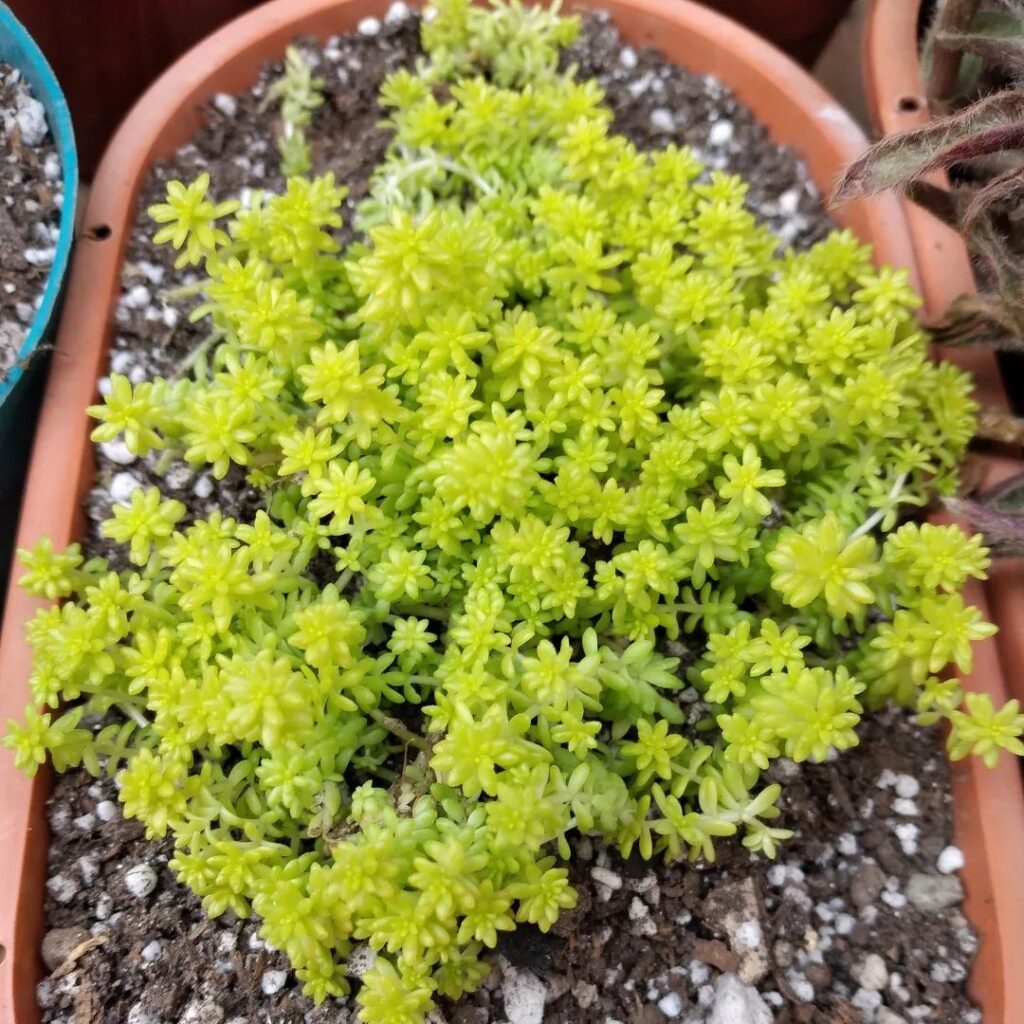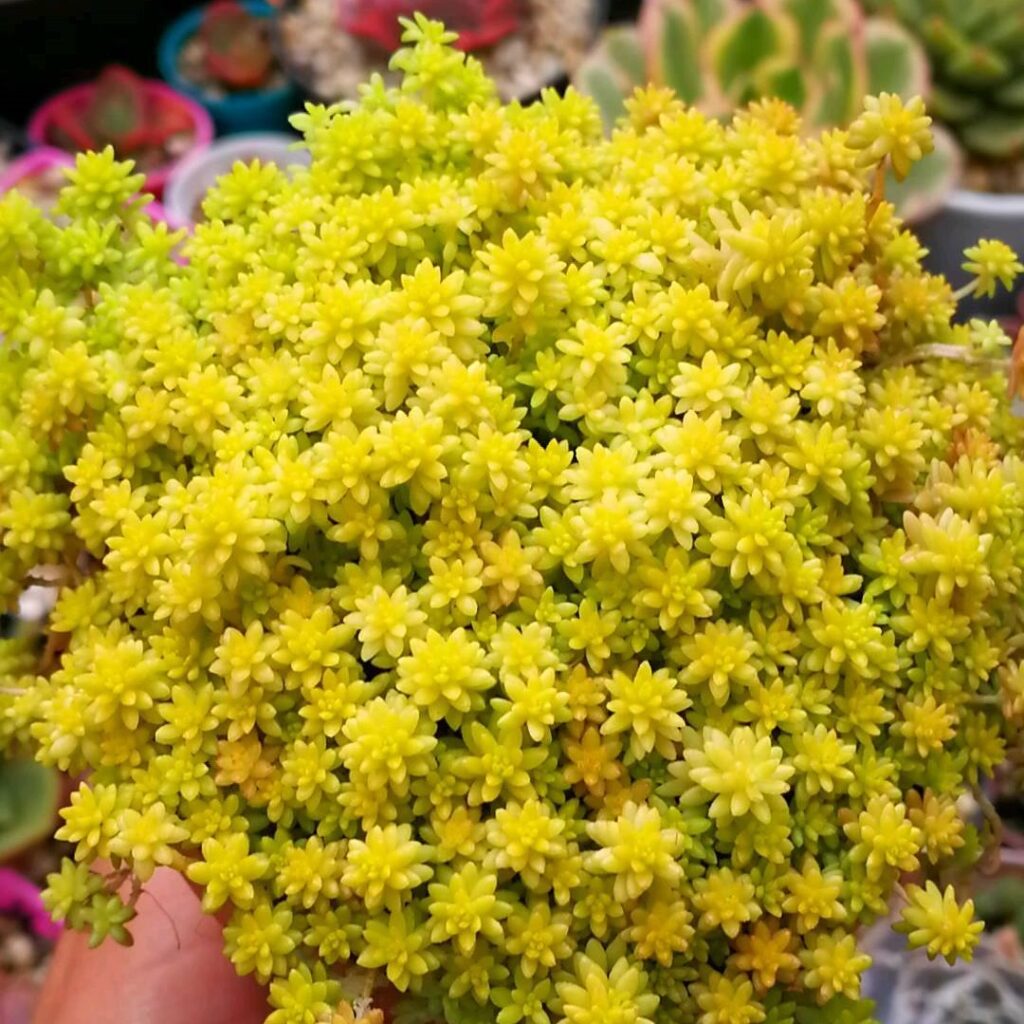Sedum japonicum: The Tiny Golden Groundcover That Will Brighten Your Garden
Get ready to add a burst of sunshine to your garden with Sedum japonicum – the tiny succulent that packs a vibrant, golden punch! This low-growing, mound-forming gem stands just 3 inches tall but makes a big impact with its striking yellow foliage. Whether you’re looking to brighten up a rock garden, trail it along borders, or add pops of color to containers, this low-maintenance beauty is sure to steal the show.

Contents
About Sedum japonicum
With its rounded, succulent shape and evergreen foliage, Sedum japonicum is a perennial standout. It forms a dense mat reaching up to 8 inches wide, making it an ideal groundcover. The thick, fleshy leaves have a smooth texture and radiant yellow-golden hue that intensifies in full sun. This autotrophic plant is perfectly suited for hot, dry conditions and well-drained soils. Plus, its desirable ornamental foliage and ability to thrive indoors or out make it ultra-versatile for golden gardens, rockeries, vertical gardens and more!
Related Post:
130+ Attractive Sedum Varieties With Pictures
Sedum Japonicum Care Guide
While petite, Sedum japonicum is far from high-maintenance. Let’s dive into the simple care requirements that will keep this sun-kissed succulent flourishing:
Light
Like a little plant sunbather, Sedum japonicum craves those rays! Position it in a spot with at least 6 hours of direct sunlight daily for the most vibrant gold coloring. If growing indoors, place near a sunny window or use a grow light.
Water
Don’t overdo it on the water, or you may end up with a sad, soggy plant. Sedum japonicum likes a nice drink about once a week from spring to fall, maybe a little more if temperatures really soar or you’re growing it in a container. The key is ensuring the soil has excellent drainage and fully dries out between waterings. Wet feet lead to rot!
Soil
Give your golden groundcover the gift of well-draining soil. A cactus or succulent mix blended with 40% minerals like perlite, gravel or lava rocks allows excess moisture to escape while providing the perfect gritty, nutrient-poor environment.

Fertilizer
Since Sedum japonicum prefers lean conditions, there’s no need to go overboard on fertilizer. If your soil is extremely lacking, use an organic fertilizer at half strength or add a light compost top dressing during the growing season. Stay away from harsh chemical fertilizers that can make the plant stretch and flop.
Temperature and Humidity
With its cold-hardy nature, Sedum japonicum can handle temperatures down to -20°F (-28°C)! It’s also drought-tolerant and unbothered by summer heat. Indoors, aim for 60-70°F (15-20°C) temps during winter months. This sun-lover doesn’t need excessive humidity levels either.

Pests and Problems
Sedum japonicum has few major pest or disease issues when planted in the right conditions. Overwatering or poorly draining soil can lead to rot, while too little light may cause legginess. Otherwise, this tough plant can shrug off insect bothers with ease.
Pruning
One of the joys of growing this low-maintenance succulent is that it requires very little pruning! Simply tidy it up after winter by removing any dead or damaged foliage. You can also pinch back new growth in spring to promote bushiness. For spreading groundcover types, just give them a light trim to maintain desired bounds.
Potting and Repotting
Whether showcasing Sedum japonicum in a container or planting it in the ground, use that well-draining soil mix we discussed. If growing it in a pot, choose one with ample drainage holes and avoid glazed or ceramic that can retain too much moisture. Repot every 2-3 years in the spring to refresh the soil.
How to Propagate Sedum japonicum
One of the best things about Sedum japonicum is how easy it is to multiply this golden groundcover beauty! You can propagate new plants from cuttings, division, or seeds.
Cuttings:
- In spring or summer, use a clean pair of scissors or pruners to take 2-3 inch stem tip cuttings from a mature plant
- Allow the cuttings to callus over for 2-3 days before planting by leaving them out to dry
- Fill a well-draining container with cactus/succulent soil mix
- Stick the cuttings into the soil mix, gently firming them in
- Water sparingly, just enough to settle the soil
- In 2-3 weeks, roots should form and new growth will appear
Division:
- Early spring is the best time to divide Sedum japonicum
- Carefully dig up the entire plant and gently pull or cut it apart into smaller sections
- Make sure each division has both stems and roots attached
- Replant the new divisions at the same soil depth as before
- Water thoroughly after planting
Seeds:
- Sow seeds on the surface of a well-draining seed starting mix
- Cover seeds with a thin layer of soil or grit
- Keep the soil lightly moist until germination in 2-4 weeks
- Provide bright light once seedlings emerge
- When seedlings are large enough to handle, transplant into their own containers
No matter which propagation method you choose, soon you’ll have an abundance of fresh, vibrant Sedum japonicum to brighten up all your gardening endeavors! With a little patience, this unstoppable succulent multiplies effortlessly.
